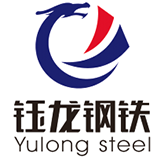-
Cangzhou Yulong Steel Co., Ltd.
-
Phone:
+86 13303177267 -
Email:
admin@ylsteelfittings.com
- English
- Arabic
- Italian
- Spanish
- Portuguese
- German
- kazakh
- Persian
- Greek
- French
- Russian
- Polish
- Thai
- Indonesian
- Vietnamese
- Zulu
- Korean
- Uzbek
- Hindi
- Serbian
- Malay
- Ukrainian
- Gujarati
- Haitian Creole
- hausa
- hawaiian
- Hebrew
- Miao
- Hungarian
- Icelandic
- igbo
- irish
- Japanese
- Javanese
- Kannada
- Khmer
- Rwandese
- Afrikaans
- Albanian
- Amharic
- Armenian
- Azerbaijani
- Basque
- Belarusian
- Bengali
- Bosnian
- Bulgarian
- Catalan
- Cebuano
- China
- China (Taiwan)
- Corsican
- Croatian
- Czech
- Danish
- Esperanto
- Estonian
- Finnish
- Frisian
- Galician
- Georgian
- Kurdish
- Kyrgyz
- Lao
- Latin
- Latvian
- Lithuanian
- Luxembourgish
- Macedonian
- Malgashi
- Malayalam
- Maltese
- Maori
- Marathi
- Mongolian
- Myanmar
- Nepali
- Norwegian
- Norwegian
- Occitan
- Pashto
- Dutch
- Punjabi
- Romanian
- Samoan
- Scottish Gaelic
- Sesotho
- Shona
- Sindhi
- Sinhala
- Slovak
- Slovenian
- Somali
- Sundanese
- Swahili
- Swedish
- Tagalog
- Tajik
- Tamil
- Tatar
- Telugu
- Turkish
- Turkmen
- Urdu
- Uighur
- Welsh
- Bantu
- Yiddish
- Yoruba

Nov . 19, 2024 01:01 Back to list
flanges norma ansi
Understanding ANSI Flanges A Comprehensive Overview
Flanges are critical components in piping systems, serving as connection points between various sections of pipe, valves, and other equipment. Among the various standards for flanges used globally, the American National Standards Institute (ANSI) has established its own set of norms that are widely utilized in the industry. ANSI flanges offer a reliable means of creating strong, leak-tight connections in various applications, making them essential in numerous sectors, including oil and gas, chemical processing, and water treatment.
ANSI Flanges An Overview
ANSI flanges are defined under specific standards, primarily ANSI/ASME B16.5 and ANSI/ASME B16.47. These standards outline the dimensions, materials, and pressure ratings of flanges, ensuring compatibility and safety in piping systems. ANSI flanges are available in several types, including blind flanges, slip-on flanges, threaded flanges, weld neck flanges, and others, each designed for specific applications.
The dimensions of ANSI flanges are standardized, which means they have prescribed sizes based on nominal pipe sizes (NPS). This standardization facilitates the easy interchangeability of flanges and fittings from different manufacturers, promoting efficiency and reducing costs for industry professionals.
Material Composition
ANSI flanges can be manufactured from a variety of materials, including carbon steel, stainless steel, and alloys. The choice of material is crucial, as it influences the flange's strength, corrosion resistance, and ability to withstand high temperatures and pressures. For instance, stainless steel flanges are often utilized in applications where corrosion resistance is paramount, while carbon steel flanges are preferred for structural applications due to their strength and cost-effectiveness.
Pressure Ratings and Temperature Limits
flanges norma ansi

ANSI flanges are classified by pressure ratings, categorized in classes ranging from 150 to 2500. The class rating indicates the maximum pressure that a flange can handle at a specified temperature. For instance, a Class 150 flange can withstand pressures up to 285 psi at a temperature of 100°F. Understanding these ratings is vital for engineers and designers when selecting flanges for specific operating environment requirements.
Gasket and Seal Considerations
Gaskets play an essential role in ensuring a leak-tight seal between flanges. The selection of the right gasket material is influenced by the fluids being transported, temperature, and pressure conditions. Common gasket materials include rubber, graphite, and metal. Proper installation procedures must also be followed, as uneven torque or improper flange alignment can lead to leaks or failure, compromising system integrity.
Advantages of ANSI Flanges
The use of ANSI flanges in piping systems offers several benefits 1. Standardization With established dimensions and ratings, ANSI flanges provide consistent solutions across various applications. 2. Versatility Available in multiple materials and types, ANSI flanges can be adapted for a wide range of purposes. 3. Reliability Designed to withstand significant pressure and temperature variations, these flanges ensure operational safety and efficiency. 4. Interchangeability Standardized dimensions facilitate easy replacement and maintenance, reducing downtime.
Conclusion
In conclusion, ANSI flanges are integral to modern piping systems, combining standardization with versatility and reliability. Their strategic use across various industries ensures the efficient and safe transportation of fluids and gases. Understanding ANSI standards is crucial for engineers and industry professionals involved in the design, installation, and maintenance of piping systems. With proper selection and installation, ANSI flanges can significantly contribute to the longevity and safety of mechanical systems.
Latest news
-
ANSI 150P SS304 SO FLANGE
NewsFeb.14,2025
-
ASTM A333GR6 STEEL PIPE
NewsJan.20,2025
-
ANSI B16.5 WELDING NECK FLANGE
NewsJan.15,2026
-
ANSI B16.5 SLIP-ON FLANGE
NewsApr.19,2024
-
SABS 1123 FLANGE
NewsJan.15,2025
-
DIN86044 PLATE FLANGE
NewsApr.19,2024
-
DIN2527 BLIND FLANGE
NewsApr.12,2024
-
JIS B2311 Butt-Welding Fittings LR/SR 45°/90° /180°Seamless/Weld
NewsApr.23,2024











